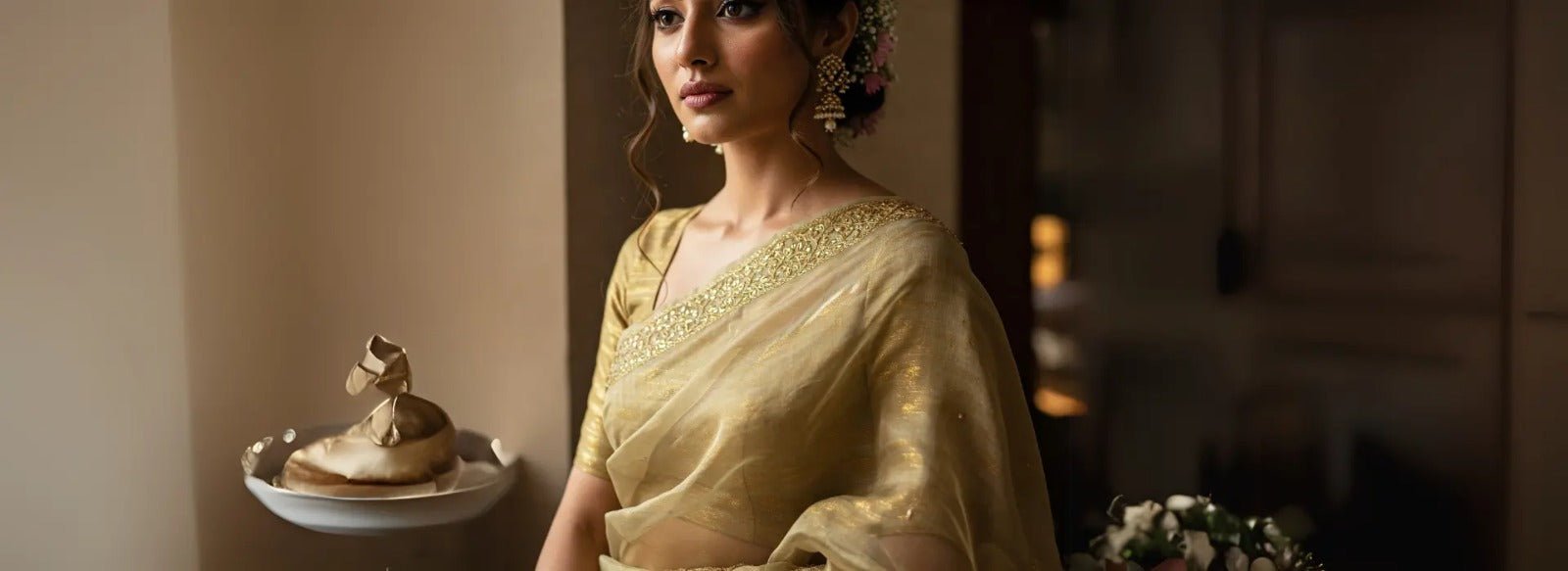Organza has a history woven with tradition, craftsmanship, and cultural significance. This fabric, once reserved for royalty, now finds its place in contemporary fashion. The journey of organza from raw threads to a designer organza saree reflects skill, patience, and artistry.
Origins of Organza
Silk organza traces its roots to China, where silk weaving began over 2,000 years ago. Traders carried this fine fabric along the Silk Road, spreading it to India, Persia, and Europe. Over time, artisans adapted it, using local techniques and materials to create variations suited to different regions.
Today, organza sarees continue to carry the legacy of those ancient trade routes. The weaving techniques remain intricate, preserving the knowledge passed down through generations.
How Organza is Made
The process of making organza starts with selecting the right fiber. Traditionally, silk threads are used, but modern variations include synthetic options like polyester and nylon. The choice of material influences the texture, sheen, and durability of the fabric.
-
Spinning the Threads
Raw silk fibers are extracted from silkworm cocoons. These fibers are spun into fine, strong threads. Synthetic versions follow a similar process but use man-made fibers. -
Twisting for Strength
Organza threads undergo a high-twist process, making them crisp and lightweight. This twisting technique ensures the fabric holds its signature stiffness while remaining breathable. -
Weaving the Fabric
The threads are woven into a plain weave structure. This open weave allows light to pass through, giving organza its translucent quality. Skilled weavers work on traditional handlooms or modern power looms to achieve uniformity. -
Acid Treatment for Texture
A mild acid wash strengthens the fibers and adds the distinctive stiffness that sets organza apart. This treatment also enhances the fabric’s ability to hold pleats and embroidery without sagging. -
Finishing Touches
The woven fabric is dyed, embroidered, or printed, depending on its final use. Artisans add embellishments like zari, thread work, and sequins to create intricate designer organza sarees.
Cultural Significance of Organza Sarees
Organza sarees hold a deep connection to cultural and festive traditions. In India, they are popular for weddings, religious ceremonies, and celebrations. The fabric’s lightness makes it ideal for summer functions, while its structured drape creates a sophisticated look.
Regional variations bring diversity to organza sarees. Banarasi organza, crafted in Varanasi, blends silk with intricate gold and silver zari work. Bengal organza features delicate hand-painted designs. Contemporary versions include digital prints, offering modern aesthetics without losing traditional charm.
The Craftsmanship Behind Designer Organza Sarees
Creating a designer organza saree involves multiple stages of artistry. Weavers, dyers, and embroiderers contribute their skills to transform raw fabric into a masterpiece.
-
Handwoven vs. Machine-Made
Handwoven organza has slight irregularities, showcasing the artisan’s touch. Machine-made versions ensure uniformity and mass production. -
Embellishment Techniques
Zari embroidery, cutwork, hand-painting, and sequins enhance the beauty of organza sarees. Artisans spend weeks perfecting these details. -
Contemporary Designs
Fashion designers experiment with pastel shades, floral motifs, and unconventional drapes. Organza sarees pair well with modern blouses, blending tradition with new-age trends.
Why Organza Sarees Remain Popular
Fashion trends change, but organza sarees stay relevant. Their versatility makes them suitable for both formal and casual occasions. Bollywood celebrities and influencers often showcase them, adding to their appeal.
The demand for sustainable fashion also boosts the popularity of silk organza. Consumers seek handmade, ethically sourced fabrics, supporting artisans who keep the craft alive.
Choosing the Right Organza Saree
For buyers, selecting an organza saree depends on fabric quality, weave, and embellishment. A pure silk organza saree has a natural sheen and a soft, crisp texture. Synthetic versions offer affordability while maintaining elegance.
When shopping for a designer organza saree, consider:
-
Occasion: Light pastel shades for daytime events, bold hues for evening wear.
-
Embroidery: Minimal designs for a subtle look, heavy embellishments for grand occasions.
-
Blouse Pairing: Off-shoulder, high-neck, or embellished blouses elevate the saree’s appeal.
Caring for Organza Sarees
Proper care ensures longevity. Dry cleaning is the best option to maintain fabric integrity. Avoid excessive ironing; instead, use steam to remove creases. Store sarees in a muslin cloth to protect them from dust and moisture.
Final Thoughts
The journey of organza from raw silk threads to a beautifully draped saree is a testament to craftsmanship and tradition. Whether wearing a classic handwoven piece or a modern designer organza saree, the fabric tells a story of artistry and heritage.
Explore our latest collection of organza sarees and embrace the elegance of this timeless fabric. Browse now and find the perfect piece for your wardrobe.

